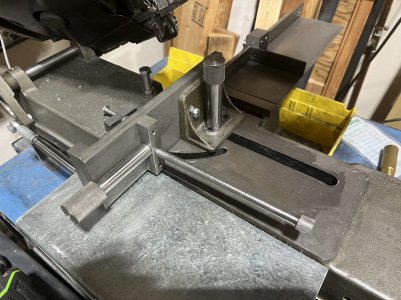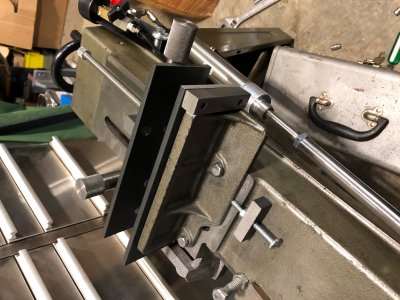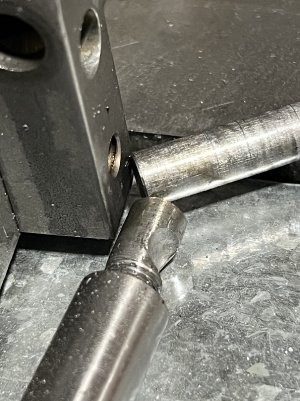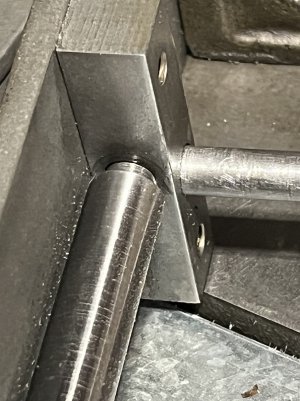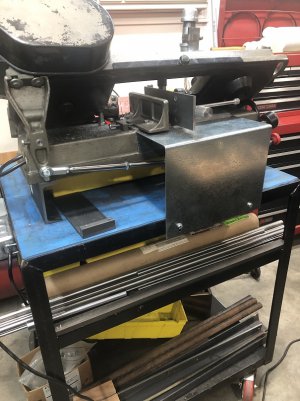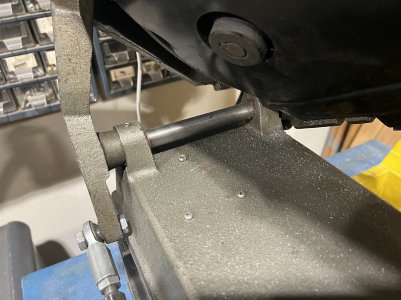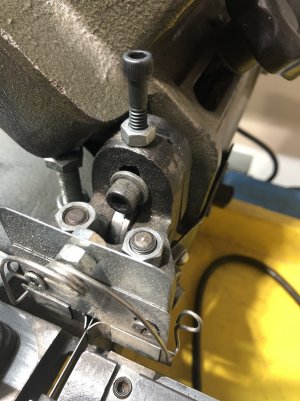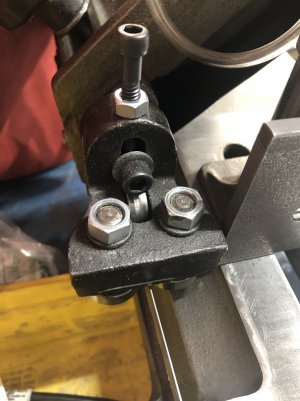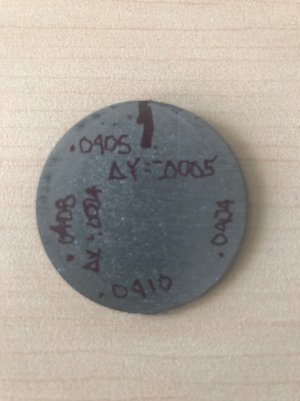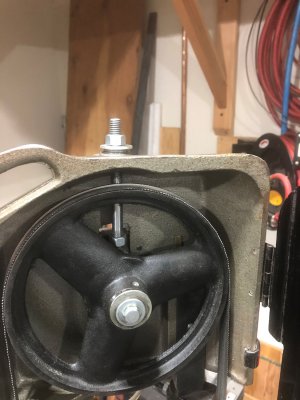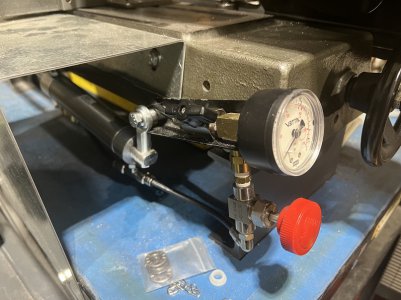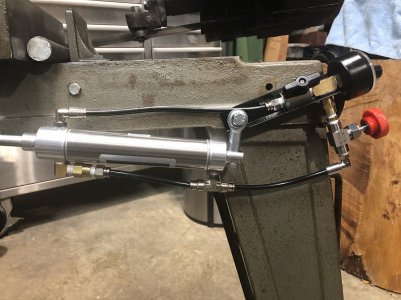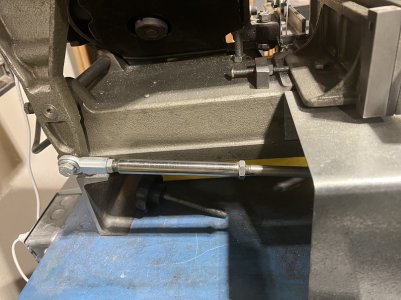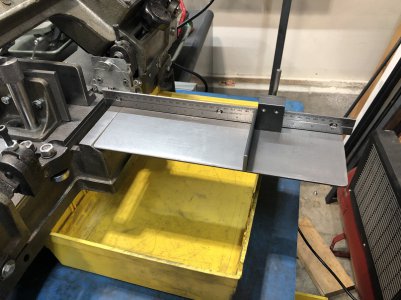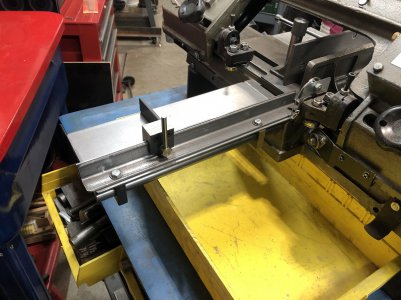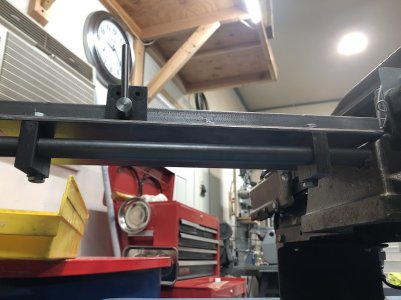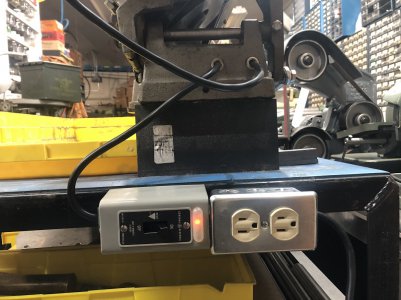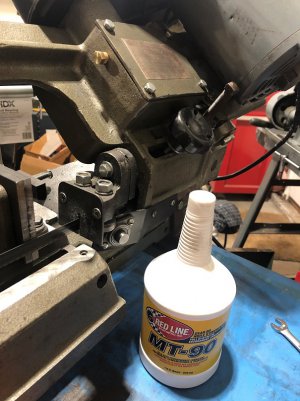- Joined
- Mar 2, 2021
- Messages
- 38
I decided to show some of my mods from pictures I took. I think that these are most of them. I never operate my saw in the vertical orientation, so some of these may not work for all of the 4x6 owners.
Here are some of my vise mods. The key modifications include:
a. knurled handles to tighten the movable vise jaw.
b. a block with a rod to locate "home" for the stationary vise jaw
c. a floating jaw to place on the stationary jaw to hold pieces very close to the blade
d. a rod to keep the movable vise jaw from rotating when gripping short pieces. Note the clamp mechanism.
d. Not shown, a T nut to replace the nut under the table of the stationary vise
e I also made a table extension out of sheet metal which is really handy when wanting to load long pieces of metal into the saw.
Here are some of my vise mods. The key modifications include:
a. knurled handles to tighten the movable vise jaw.
b. a block with a rod to locate "home" for the stationary vise jaw
c. a floating jaw to place on the stationary jaw to hold pieces very close to the blade
d. a rod to keep the movable vise jaw from rotating when gripping short pieces. Note the clamp mechanism.
d. Not shown, a T nut to replace the nut under the table of the stationary vise
e I also made a table extension out of sheet metal which is really handy when wanting to load long pieces of metal into the saw.
Attachments
Last edited:


